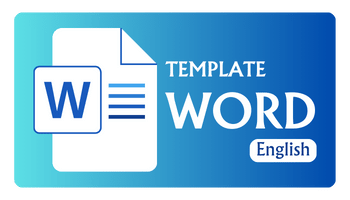Assistance in Developing Canvas Model Business Capacity at Walcoo Shoes in Bogor City
DOI:
https://doi.org/10.55824/jpm.v4i4.602Keywords:
MSMEs, SWOT, Marketplace, Business Model CanvasAbstract
MSMEs are an important pillar in the Indonesian economy with a significant contribution to GDP and labor absorption. The fashion industry, especially shoes, is showing strong growth, and WALCOO Shoes as a player in this industry needs to understand and design the right business model. This study aims to analyze the WALCOO Shoes business model using the Business Model Canvas (BMC) approach and SWOT analysis. The SWOT analysis shows that WALCOO Shoes strengths in the comfort and flexibility of its products, but has weaknesses in supporting intensive physical activity and weather resistance. Opportunities include fashion trends and innovative materials, while the main threats come from fierce competition and changing consumer trends. Strategic recommendations for WALCOO Shoes include improving marketing strategies, maintaining product quality, and offering after-sales service with a warranty. The main resources include human resources, raw materials, and sewing machines, while the main activity is the shoemaking process from design to sales. The use of social media and e-commerce such as Tiktok and Shopee is optimized for sales channels. The proposed business model is expected to improve WALCOO Shoes' performance and competitiveness in the shoe industryReferences
Kajian Pustaka 2022. Tersedia di: https://www.kajianpustaka.com/2022/11/business model-canvas-bmc.html
Kotler, Philip & Keller, Kevin Lane. 2016. Marketing Management. Pearson.
Lembaga Pengembangan Perbankan Indonesia & Bank Indonesia. 2015. Profil Bisnis Usaha Mikro, Kecil, dan Menengah (UMKM). Bank Indonesia. https://www.bi.go.id/id/umkm/penelitian/Documents/Profil%20Bisnis%20UMKM.pdf
Limanseto, H. 2021. UMKM menjadi pilar penting dalam perekonomian Indonesia. www.ekon.go.id. Tersedia di: https://ekon.go.id/publikasi/detail/2969/umkm menjadi-pilar-penting-dalam perekonomian-indonesia.
Magretta, J. 2002. Why Business Models Matter. 2010. Harvard Business Review.
Osterwalder, A & Pigneur, Y. 2010. Business Model Generation : A Handbook for Visionaries, Game Changers dan Challangers. New Jersey : John Wiley & Sons, Inc.
Rokhmah, B. E., & Yahya, I. 2020. Tantangan, Kendala, dan Kesiapan Pemasaran Online UMKM di Desa Nglebak, Kecamatan Tawangmangu, Kabupaten Karanganyar. Filantropi: Jurnal Manajemen Zakat dan Wakaf, 1(1), 20 - 31
Downloads
Published
Issue
Section
License
Penulis yang menerbitkan jurnal ini menyetujui persyaratan berikut:
- Hak cipta atas artikel apa pun dipegang oleh penulisnya.
- Penulis memberikan jurnal, hak publikasi pertama dengan karya yang dilisensikan secara bersamaan di bawah Lisensi Atribusi Creative Commons yang memungkinkan orang lain untuk membagikan karya dengan pengakuan atas kepenulisan dan publikasi awal karya tersebut dalam jurnal ini.
- Penulis dapat membuat pengaturan kontrak tambahan yang terpisah untuk distribusi non-eksklusif dari versi jurnal yang diterbitkan dari karya tersebut (misalnya, mempostingnya ke repositori institusional atau menerbitkannya dalam sebuah buku), dengan pengakuan dari publikasi awalnya di jurnal ini.
- Penulis diizinkan dan didorong untuk memposting karya mereka secara online (misalnya, di repositori institusional atau di situs web mereka) sebelum dan selama proses pengiriman, karena hal itu dapat mengarah pada pertukaran yang produktif, serta kutipan yang lebih awal dan lebih besar dari karya yang diterbitkan.
- Artikel dan materi terkait yang diterbitkan didistribusikan di bawah Lisensi Internasional Creative Commons Attribution-ShareAlike 4.0








